Table of contents
- Report – Aerodynamics at BMW-Motorrad “We count every drop”
- Targeted development only possible since 2010
- Project processes have changed
- Solutions are developed together
- Water comes from the Munich subway shafts
- 10,000 well-cooled processors are available
- Simulation, wind tunnel and test drive
- This is how the wind tunnels work
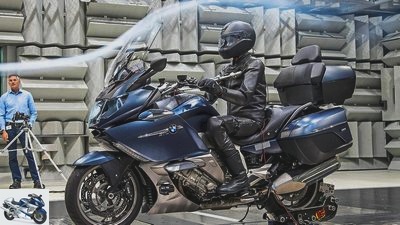
Arturo Rivas
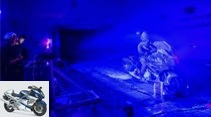
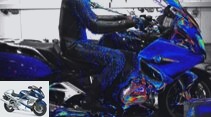
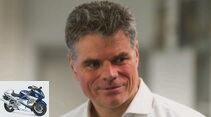
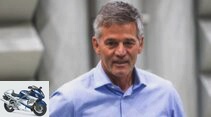
11 pictures
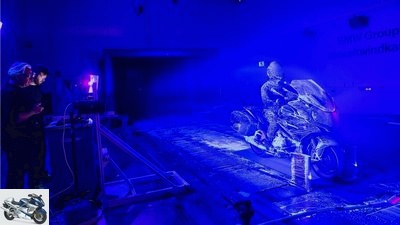
Arturo Rivas
1/11
Visit to the BMW wind tunnel.

BMW
2/11
Nice crap weather: The dummy doesn’t care, and the environmental wind tunnel provides the BMW technicians with comprehensive information.
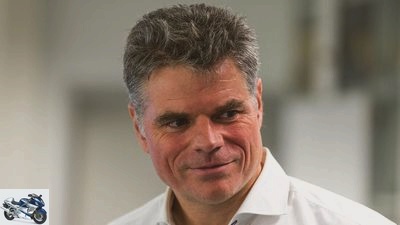
Arturo Rivas
3/11
Toine Ruhe, Head of Body Development, BMW Motorrad: “We count every drop”

Arturo Rivas
4/11
Helmut Diehl, Head of Functional Development at BMW Motorrrad: “The simulations have halved the wind tunnel time per vehicle”
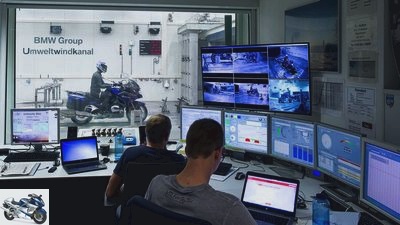
Arturo Rivas
5/11
When it’s not raining: the R 1200 RT on a “warm country trip” with an outside temperature of 35 degrees. The treadmill moves the air under the motorcycle.
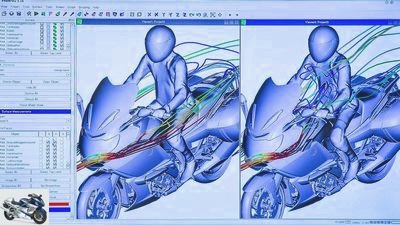
Arturo Rivas
6/11
Everything is simulated here: the air flow with and without the flaps set up…
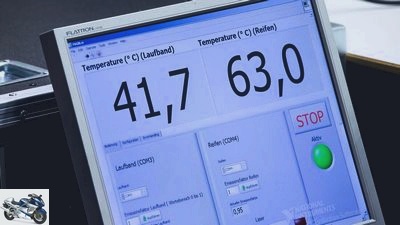
Arturo Rivas
7/11
Everything is recorded here: the temperature of the treadmill and tires…
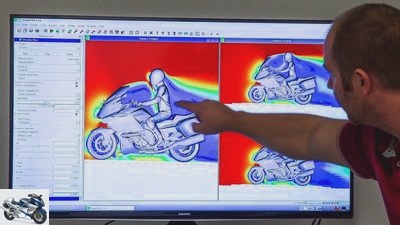
Arturo Rivas
8/11
…and the pressure conditions on the K 1600 GT in general.
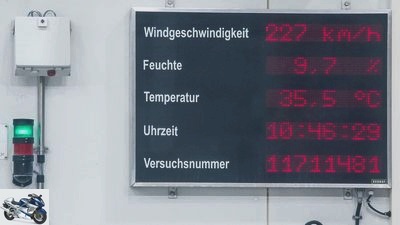
Arturo Rivas
9/11
…as well as wind speed, temperature and – very importantly – test number.
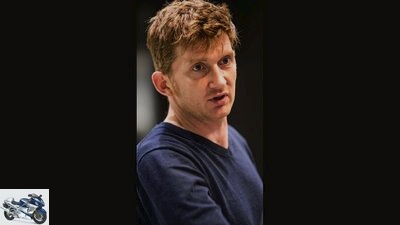
Arturo Rivas
10/11
Gerhard Hofer on the measurements in the acoustic wind tunnel: “Every motorcycle develops a different wind noise”
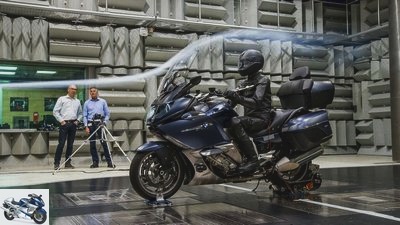
Arturo Rivas
11/11
Largely silence: the plume of smoke shows how the pane directs the airflow over the dummy.
counselor
technology & future
Report – Aerodynamics at BMW-Motorrad
Report – Aerodynamics at BMW-Motorrad
“We count every drop”
The drag coefficient is not a central issue for motorcycles. Even so, aerodynamics are extremely important. Wind and weather protection, acoustics, driving stability – the air flow plays a role everywhere. A visit to the BMW wind tunnels.
Stefan Kaschel
11/24/2016
There are motorcycles where you can be sure that they have never seen a wind tunnel. Take naked bikes, for example. Joking aside. Even some all-rounders and one or the other tourer should only know this facility from hearsay, it rustles, rumbles and drips behind upper panels and panels. And it does so regardless of the position of the target and body size. Turbulence, no matter where the helmeted head retreats, is a sure sign that designers, but not aerodynamicists, were at work here.
Buy complete article
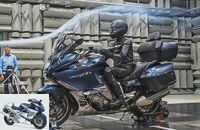
Report – Aerodynamics at BMW-Motorrad
“We count every drop”
6 pages) as PDF
€ 2.00
Buy now
Because one of the primary goals of these specialists is to integrate the rider into the motorcycle system in such a way that it pulls, tugs or whistles at as few corners as possible. Not only for reasons of comfort, but also because as little surface area as possible also means low air resistance. And that in turn benefits the maximum possible speed. A central topic for super athletes, of course. Just like the downforce, which costs a bit of speed but brings stability. You quickly notice that this is a highly complex matter.
Targeted development only possible since 2010
So complex that Bayerische Motorenwerke has had its own department for functional development and functional integration since 1994 – the year the BMW R 1100 RT was born. There, designers and aerodynamicists work hand in hand, so to speak. For the benefit of the driver and the machine, because of course weather protection, engine cooling and the precise removal of hot exhaust air are also central issues. Just like the possible contact of the driver with this exhaust air. Before the shin melts away, a designer has to come up with a new solution – no matter how quick the old one looked.
In other words, a broad field that previously could only be plowed through extensive driving tests – and therefore functioned more on the principle of “learning by doing” than through targeted aerodynamic development and basic research. The latter is as targeted as it is today at BMW only possible since 2010. Since then, there has been an energy and environmental test center in the huge FIZ research and innovation center in the north of Munich and, in addition to the climatic wind tunnel and the thermal wind tunnel, there is also an environmental wind tunnel in which almost all climate zones in the world and all weather conditions can be simulated.
Project processes have changed
“We used to have to drive into a warm country with bags and bags if we wanted to know how the temperature balance works at 35 degrees and whether the driver is grilled by the engine heat in this heat,” explains Helmut Diehl, Head of Functional Body Development at BMW motorcycle.
“With today’s project processes, that would no longer be possible at all in terms of time. In addition, there was no weather guarantee there either, but temperature fluctuations, wind and other environmental influences, which affect the results. Here in the environmental wind tunnel we can adjust everything as we need it. “
Solutions are developed together
Conditions like those in the “warm country”: That means that in the wind tunnel in the north of Munich, even in German November, BMW motorcycles punch a hole in the artificially generated headwind at a constant 35 degrees. “If it works under these conditions, you won’t have a problem in the field either,” explains test engineer Armin Hirn. No problem, that means: The temperature balance of the engine is in the green range under all conditions, and the dummy in normal motorcycle protective clothing is nowhere excessively fried by the warm exhaust air.
“If our sensors show 50 degrees on the surface of the protective clothing, that’s still completely okay. At 60 degrees no more, we have to do something, ”says Hirn. Doing something means first and foremost: sitting down with the designers and technicians and looking for a different solution. This is the case with the heat development on the machine and driver, and it is no different with weather protection.
Water comes from the Munich subway shafts
When the BMW people want it, it rains twine in the environmental sewer. Figuratively speaking, because the nozzles for the rainwater are positioned in front of and not above the motorcycle. But that doesn’t matter, because even in everyday motorcycle life, the water comes from the front while driving. And of course from below, which is why the treadmill under the motorcycle not only moves the air under the fairing keel up to a speed of 250 km / h, but also simulates the splash of water on a wet road.
Speaking of splashing water: It is by no means simple tap water that ensures torrential rain in the environmental wind tunnel according to the motto “A lot helps a lot”, but rather low-lime seepage water from the Munich subway shafts. “It runs very differently from lime-rich water from the tap,” explains Hirn. “And so that you can see how things are going, we add the contrast agent Zinopal.” The result: see picture gallery.
10,000 well-cooled processors are available
“This is how we count every drop,” says Toine Ruhe, Head of Body Development at BMW Motorrad, happily. Numerically, one has only been able to do this for six months, before that one had to rely on the subjective impression. In other words: the troops from the environmental wind tunnel now know exactly how much water has landed where after the simulated rain trip. In order to know how much wind pressure there is at which point, in Munich – theoretically – you no longer even need the wind tunnel. To put it bluntly, the data from the design department and a couple of computers do the trick. A little more precise: More than 10,000 well-cooled processors are available at the same time to run around 100 simulations per motorcycle variant.
Calculation time per simulation: 25 hours, despite the enormous computing power. But it’s worth it, even if the license costs for the simulation programs for the entire BMW AG are in the seven-digit euro range. “That roughly halved the wind tunnel time,” explains Helmut Diehl. “But of course we could never afford that alone, without the cars.” So it’s no wonder that computer times are just as hotly contested as those in the wind tunnel. Pascal Ewerth, one of the program specialists, knows a thing or two about it: “There are 20 people on every corner of a car, so the coordination process for a motorcycle is much easier.” where the simulation precisely anticipated what the wind tunnel later confirmed. Namely, that it fits.
Simulation, wind tunnel and test drive
“Nevertheless, there are many vehicles for which we need all three tools, ie the simulation, the wind tunnel and the test drive,” Helmut Diehl puts into perspective. Especially when it comes to aeroacoustics. The noise level in the microphone-studded helmet and its quality cannot be calculated with any simulation in the world. “Every motorcycle makes a different noise,” explains Gerhard Hafer in the acoustic wind tunnel.
The aerospace engineer has been dealing with aerodynamics and wind noise development for years and has had a lot of noise around his ears. The large BMW K 1600 GT is therefore a haven of peace for him with the windshield raised and 83 dB (A). 83 dB (A) – even two less than in the specifications. Helmut Diehl and his team did a great job there.
This is how the wind tunnels work
The technology. The acoustic wind tunnel on Hanauer Strasse is no longer fresh, but is still up to date. A rough breeze blows in the 43-meter-long and 15-meter-high building when the five and a half meter diameter fan with 2638 hp is driven and generates wind speeds of 255 km / h. Above all, acoustic values and air resistance are determined here. The much more recent environmental wind tunnel (see picture gallery) deals with influencing factors such as heat, cold, air pressure and precipitation. “The whole world with all climate zones in one building” – that’s the motto. The people of Munich can even let it snow here. Not just in winter.
Related articles
-
motorcycles Report: BMW engine from China Report: BMW engine from China China Xcountry You don’t see it and you don’t hear it. Yeah, you don’t even feel…
-
motorcycles Report: 200 hp limit Report: 200 hp limit Either way? It seems certain that it will fall. When ?? one can speculate about this. And what kind…
-
2snap 24 pictures 2snap 1/24 2snap 2/24 2snap 3/24 2snap 4/24 2snap 5/24 2snap 6/24 2snap 7/24 2snap 8/24 2snap 9/24 2snap 10/24 2snap 11/24 2snap 12/24…
-
Report: Riding a motorcycle in Japan
Suzuki to travel Report: Riding a motorcycle in Japan Report: Riding a motorcycle in Japan The cradle of the modern motorcycle: Through Japan by…
-
Report: This is how Austria’s police make money
archive to travel Report: This is how Austria’s police make money Report: rip off or just punishment? This is how Austria’s police make money Right line…
-
Report: House search too fast because of 48 km / h
jkuenstle.de counselor traffic & business Report: House search too fast because of 48 km / h House search too fast because of 48 km / h Open up, police!…
-
Report: Visit to the Magura factory
Jahn motorcycles Report: Visit to the Magura factory Report: Visit to the Magura factory Specialist in grips, brakes and handlebars At Magura, the relics…
-
Triumph Tiger 1050 Sport in the driving report
triumph 20th pictures triumph 1/20 Big cat: a full-fledged motorcycle, but a moderate 830 millimeter seat height. triumph 2/20 Tank capacity: 20 liters….
-
Technology: aerodynamics and acoustics comparison
fact counselor technology & future Technology: aerodynamics and acoustics comparison Technology: aerodynamics and acoustics comparison Close to the wind…
-
Driving report Kawasaki ZRX 1200 S and ZR-7 S
motorcycles Driving report Kawasaki ZRX 1200 S and ZR-7 S Driving report Kawasaki ZRX 1200 S and ZR-7 S Partly cheerful With the ZRX 1200 S, Kawasaki is…